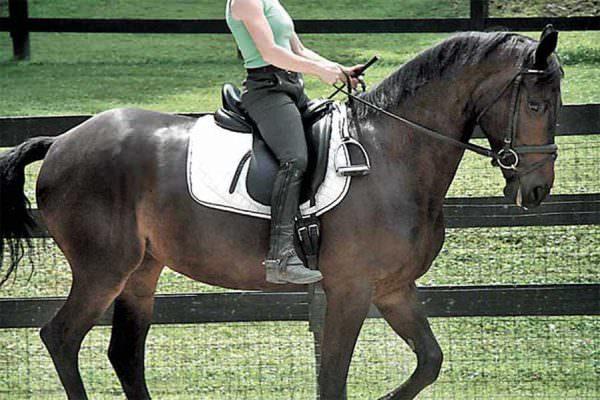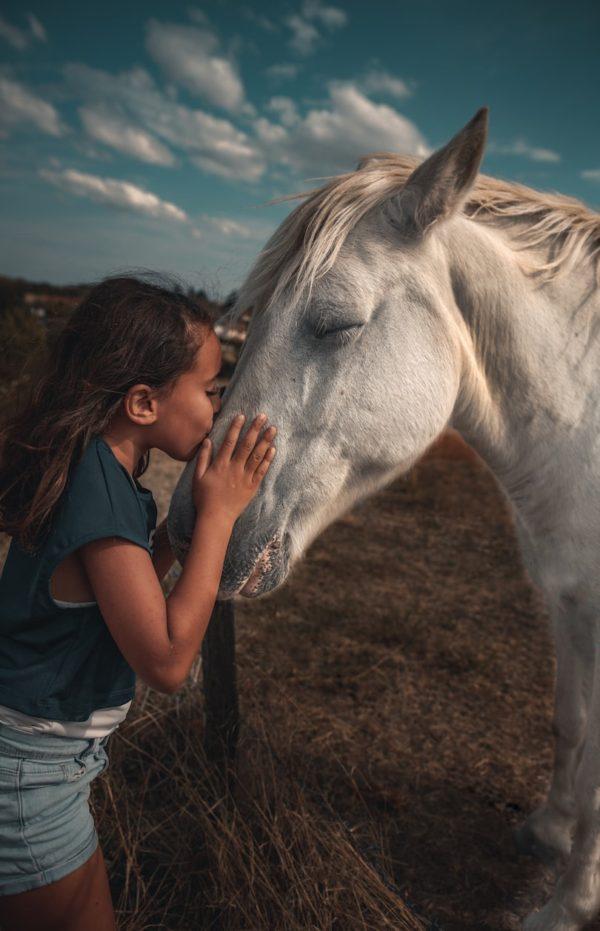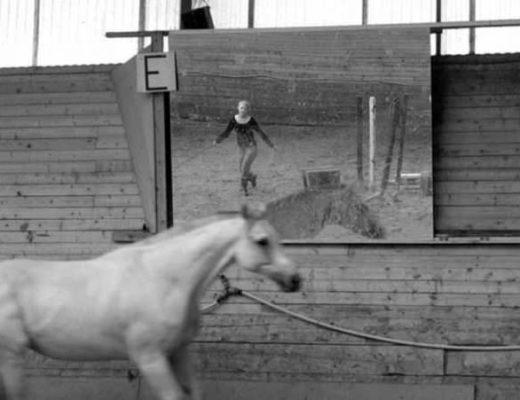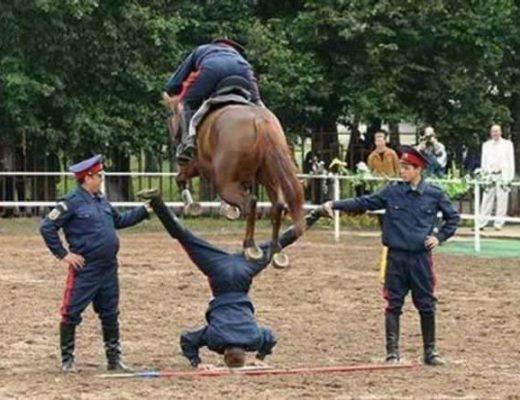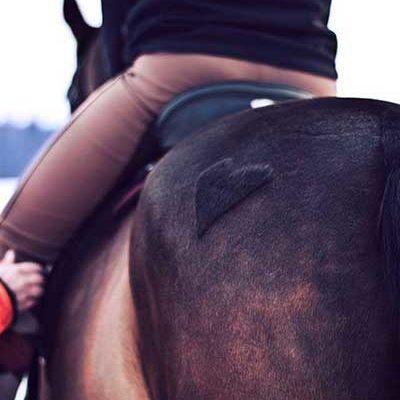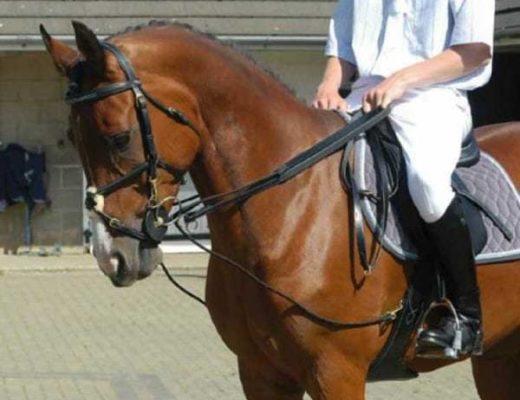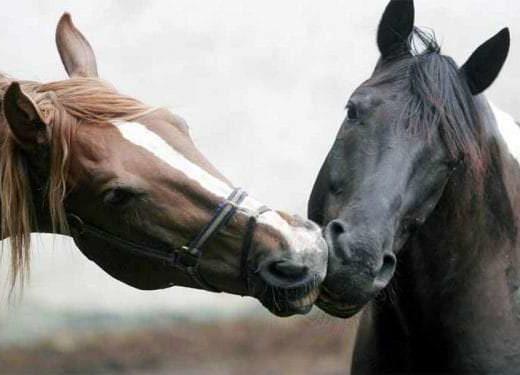It often seems that the “correct” use of the aids is with emphasis on the legs for most of the work, and little is left to the hands. Just how do the leg aids interact with the horse to communicate our wishes? In this article, you'll learn how to simplify the use of the legs, when leg aids are appropriate and the difference between the two methods of leg aids.
Common leg aids
Go into any barn during lessons and you'll often hear some combination of a few choice phrases describing the use of the leg aids. In the simplicity of these descriptions however, it is easy to be left confused, frustrated or just ineffective. Inside leg, outside leg, more or less leg.. how much leg is appropriate? Leg positions also seem to hold a magical method to the success of the aids given, in front of the girth, on the girth or behind the girth. Then you take into consideration whether both legs are acting at the same time, and at the same position, or if not how are they positioned? If it's left your head spinning, you aren't alone.
Factors
The leg aids aren't naturally born into every horse's natural instincts. Quite often the methods we use to direct our horses are in complete opposition to the horse's natural reactions. For example, take a horse's natural instinct to move into pressure, yet most young riders are taught to “pull to stop” on the reins. Pulling however, encourages the horse to move into the reins even more.
So, if we are opposing our horse's natural reactions, rather than encouraging them, why is it that we are able to train our horses to perform the things they do? The majority of horses are extremely forgiving and have an interest in doing what we ask. There are a few out there however who refuse to give into this opposition, and become the “dangerous”, “difficult” or “stubborn” horses.
A horse's natural reaction to being embraced by our legs around their barrel, is not to move forward. Their natural reaction is to compact their body, arch the back. Possibly become stiff legged, resist movement, stop. There are horses out there who will move forward from the legs automatically, often this is combined with some sort of arching of the back, even bucking.
It is through conditioning and desensitizing the horse to the presence and pressure of our legs that we begin to develop the leg aids. It is here that we begin to develop two distinct uses of the leg – positional or impulsive. How they are divided up is strictly by their purpose.
- POSITIONAL LEG: the leg is placed in a specific position against the horse's side and maintains consistent contact.
- IMPULSIVE LEG: the leg acts by coming to contact and losing contact, repeatedly.
The positional leg aid is vital in clarifying to the horse which lead to take in the canter. In striking off into canter on the right lead for example, the left leg would take up a positional role, placed slightly behind the girth.
The role of an impulsive leg aid is to help increase the energy the horse is moving with. For example, the impulsive leg would signal to the horse to increase his energy enough to strike off into canter, being the right leg for taking a right lead canter.
You can use two impulsive legs at the same time, or two positional, but be careful when doing this. Without a specific purpose and judicious tact, it is easy to contradict your own leg aids and give the horse no clear signal of what to do or where to go. Two positional legs used at the same time are essential in the ‘combined halt', where the horse is asked to stop using both the half halt on the reins and two positional legs. When the two aids are balanced, the horse will stop, when one is stronger than the other the horse will respond to the stronger aid. More about the ‘combined halt' can be found in my article on The Simplicity of the Aids.
Strength is relative
If you've ever found yourself using your legs much like a fly swatter in an attempt to kill the fly, that is hard, fast and frequent, you are doing too much. I imagine you feel the same way, as those legs tire and the repetitions become more challenging to maintain. When we use our legs in such a hard, forceful manner, not only do we lose physical strength, we also lose respect from our horse. Keep in mind that every time we attempt to use ego force, that is physical force, the horse learns just how strong or weak we really are. I don't know about you, but I don't want my horses thinking they are stronger than I am, and I'm not going to be able to prove I am physically stronger by strong-arming them in the training process.
There is another way that we can prove our strength, and it is not based on physical prowess. Rather, when we are strong in our mind, that is the way we work with the horse in a respectful, considerate and careful way, they learn to respect us in a more profound way. The same goes when we use our legs. If we consider that we want to respect the horse's sides with our legs, then we will avoid banging our legs against them. If we are considerate, we will think about whether the horse understands what it is we want, and work to ensure that he understands us clearly. And likewise, when we are careful, we use our legs tactfully and purposefully. These are all the things we need to have success in developing a light relationship between our legs and the sides of the horse. It is not just the reins that we want to practice ‘lightness' with.
Secret formula
So how do we go about developing a light relationship between our legs and the sides of the horse? One in which we merely have to shift our leg and the horse understands we want a canter depart from the halt, or a pirouette, or we want him to walk from a gallop? Let's consider the horse from this perspective – If he knows what it is we want, he will do it, no questions. That is simple enough, so when the horse does not respond to our leg aid right away, it means he does not know what it is we want.
As we ask, we continue with the aid as we want him to respond to it. If you want your horse to pirouette when use a specific positional leg, then you do not move the leg to where he will respond right away. You keep it where you want it and ask as you want him to respond. That means the leg aid stays respectful, considerate and careful. When we approach the horse's training in this way, it leaves him room for error and trial, but it also leaves him room to be comfortable making attempts to do what you want. If the horse is concerned about you increasing the ego force, or frustrated because the force is increasing steadily, he will be less likely to make a responsible response to your request. Start light, end light, and the horse will become light.
